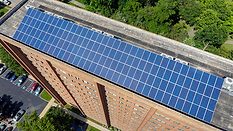

US water infrastructure needs work


In a recent whitepaper written by Dr. Janet Stout and Abraham Cullom of the Special Pathogens lab – both legionella experts – it’s reported that legionaires disseas is on the rise, particularly in the healthcare setting. Cliamte change, aging infrastrcuturem increasing population are all identified factors that increase legionella cases.


Copyright ©2025. All Rights Reserved BNP Media.
Design, CMS, Hosting & Web Development :: ePublishing